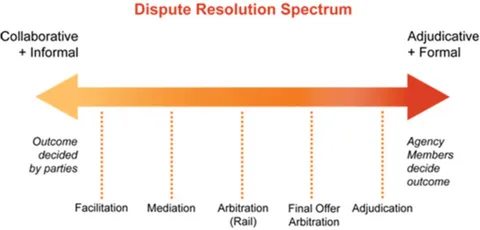In today’s complex organizational environments, disputes are inevitable. Many organizations use committees as a structured approach to resolving conflicts internally. While committee dispute resolution offers several advantages, it also carries specific legal considerations that organizations must carefully navigate. This article explores the legal implications of committee dispute resolution in organizations and how these affect both the process and outcomes of resolving conflicts.
Understanding Committee Dispute Resolution in Organizations
Committee dispute resolution involves forming a designated group of individuals, often from within the organization, to address and resolve disputes among employees, management, or other stakeholders. These committees serve as an alternative to formal litigation or external arbitration, promoting a more collaborative and cost-effective resolution.
However, organizations must ensure that these committees operate within the legal framework to avoid unintended consequences such as violations of employment laws, breach of contract, or allegations of unfair treatment.
Key Legal Considerations
1. Confidentiality and Privacy Laws
One of the significant legal implications of committee dispute resolution in organizations pertains to confidentiality. Committees must handle sensitive information with care to comply with privacy regulations such as GDPR, HIPAA (if applicable), and other local data protection laws. Failure to maintain confidentiality can result in legal penalties and damage to the organization’s reputation.
2. Fairness and Non-Discrimination
The dispute resolution committee must operate in a manner that is impartial and fair to all parties involved. Discrimination based on race, gender, religion, or other protected characteristics during the resolution process can lead to legal claims under employment and civil rights laws. Organizations must ensure that committee members are trained and aware of these legal boundaries to mitigate risk.
3. Legal Binding and Enforceability of Decisions
Another critical aspect involves the legal standing of the committee’s decisions. Organizations should clearly define whether the committee’s resolutions are binding or advisory. Without proper documentation and agreement, disputes over enforcement can arise, leading to further legal complications.
Potential Risks and How to Mitigate Them
Despite the advantages, organizations must be cautious of several risks linked to the legal implications of committee dispute resolution in organizations:
- Bias or Conflict of Interest: Committee members must disclose any conflicts of interest to preserve the integrity of the process.
- Lack of Due Process: Parties involved should have the opportunity to present their case fully.
- Failure to Comply with Employment Laws: Ensuring compliance with labor laws is essential to avoid lawsuits.
To mitigate these risks, organizations should develop clear policies, provide training, and seek legal counsel when establishing dispute resolution committees.
Conclusion
The legal implications of committee dispute resolution in organizations are multifaceted and require careful attention. While committees can offer a valuable avenue for resolving conflicts internally, understanding and addressing the legal aspects surrounding confidentiality, fairness, enforceability, and compliance is essential. Organizations that invest in robust frameworks and legal safeguards will better protect themselves and foster a more harmonious workplace.

